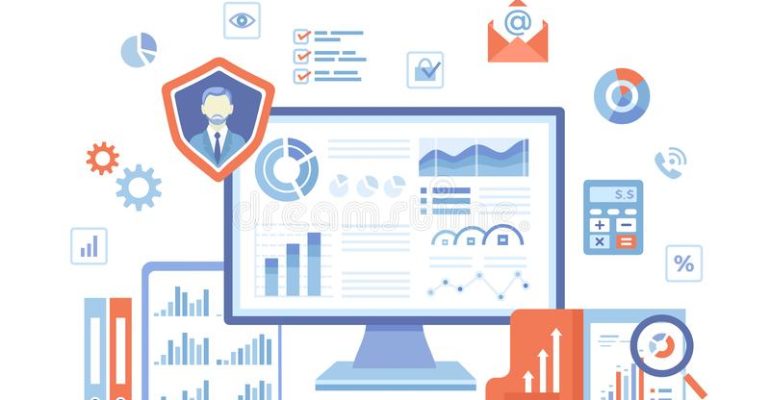Need for unified IT monitoring for timely detection and response to cyber threats

Need for unified IT monitoring for timely detection and response to cyber threats
Cyber-related threats are on the rise. Organizations are faced with the arduous task of keeping their systems secure from a myriad of ever-increasing threats that continually mutate due to a growth in the threat landscape and volume, sophistication in attacks and techniques, use of BYOD and migration to cloud. Whether for monetary gain, blackmail, industrial espionage, sabotage, fame, or whatever motive drives the mind of attackers, bottom line is: cyber-attacks can turn out to be very costly to your business. They will cost your reputation which you have built for many years leading to loss of productivity, customer satisfaction, revenue, brand reputation and trust. While cyberattacks are on the rise and inevitable, what matters is how you prepare and respond in a timely fashion, minimizing damage while improving security posture and controls. The most important thing is, in the eventuality of an attack, does your systems have the ability to detect it in the first place? Will your security and IT teams have the right tools to investigate and respond appropriately and stop the attack in the early stages before any advancement or data breach and resultant damage?
Here are some of the common cyber-related threats affecting enterprise IT today
- Distributed Denial of Service (DDoS) attacks – DDoS works by directing so much traffic to a target server/network that it becomes overwhelmed and unable to respond/ function properly. An attacker does this by building botnets and issues control commands using multiple computers from different locations. Attackers usually use discovery techniques to understand open application ports to initiate such an attack.
- Spoofing/ Refactoring attacks – In these attacks, attacker changes the source address of a particular piece of information to make it look like it’s emanating from a different and trusted source. It may be in the form of IP, MAC address, or E-mail spoofing. The end result is huge and un necessary data processing overwhelming your application servers.
- Malware Attacks – In these attacks a malicious software is often installed without user knowledge or consent to perform unauthorized activities, and cause damage or interruption of normal system activity. Once a malware gains access to one system, it can continue to manifest and infect multiple other systems within the IT network.
- Web Application Attacks – with a spike in the usage of sophisticated web applications that can do just about anything, the attack surface has increased as well. Many hackers are now targeting web apps with threats such as SQL injection, cross-site scripting (XSS), broken access control and misconfiguration of security parameters.
- Man in the Middle/ On-path Attacks – this is an interception of traffic between two computers whereby the attacker uses another computer to forward traffic between the two.
- Reputation Threats – this includes outbound or inbound connections from/to your enterprise which are malicious from bad reputation URLs/websites, DNS and Public IPs.
- Network Anomalies – these are unusual activities within the enterprise network that tend to violate network and application standards. Anomalies should be detected early, and appropriate action taken before they can turn into potential threats.
- User Behavior Anomalies – just like network anomalies, this category focuses on unusual user behavior within the enterprise IT that could turn out into potential threats.
How unified IT monitoring in enterprise IT can help you detect and respond to cyber threats effectively.
In an enterprise IT environment, different teams are working concurrently on network, application, infrastructure and cyber security areas using different tools. Typically, the symptoms of a cyber threat often manifest as network, application or infrastructure performance issues or outages. IT teams often spend enormous amount of time troubleshooting these issues on traditional network, application and infrastructure side without any idea on cyber threats. Likewise cyber security teams might detect symptoms of threats using their own tools but fail to understand the overall impact of the cyber threat on the applications, infrastructure, network and business since threat detection tools often fail to provide deep investigation on impact of the threats on customers, users and overall business. As this goes back and forth between teams, the business and customers continue to suffer and threats continue to manifest into various stages within the enterprise. Businesses find themselves in such situations because, in most cases, threats are detected in one system and analysis done in many other different tools and across teams, which is a complicated, time-consuming and inefficient process. Most of the time, threats are detected but the root cause and impact remain unknown, and due to the lack of unified visibility, actions are not taken in timely fashion and threats continue to grow to other levels within the enterprise environment ending up in a data breach.
Unified IT monitoring brings all these functionalities into a single pane of glass by creating a centralized, yet wider picture of an organization’s IT environment. It gives you a bird’s eye view of the entire IT environment, providing real-time feeds and alerts cross network, application, infrastructure and cyber threats. It enables you to easily identify cybersecurity-related threats in real-time, study the threat impact, stage and perform deep analysis to unearth underlying root cause in areas of network, application and infrastructure saving your teams enormous amount of time in taking timely and confident actions to stop the threats early in their lifecycle.
Bottom line? We’re living in a world where cyber threats have become the order of the day and every organization needs a holistic approach in handling such threats while ensuring business continuity. Unified IT monitoring saves an organization lots of time and money since threats are detected in real-time and early in their cycle and receive proper remediation.

